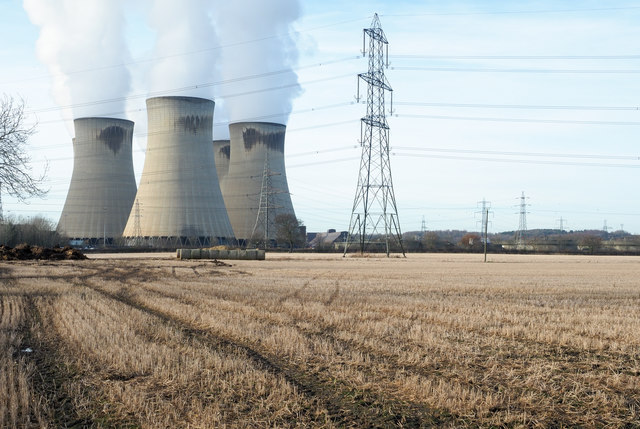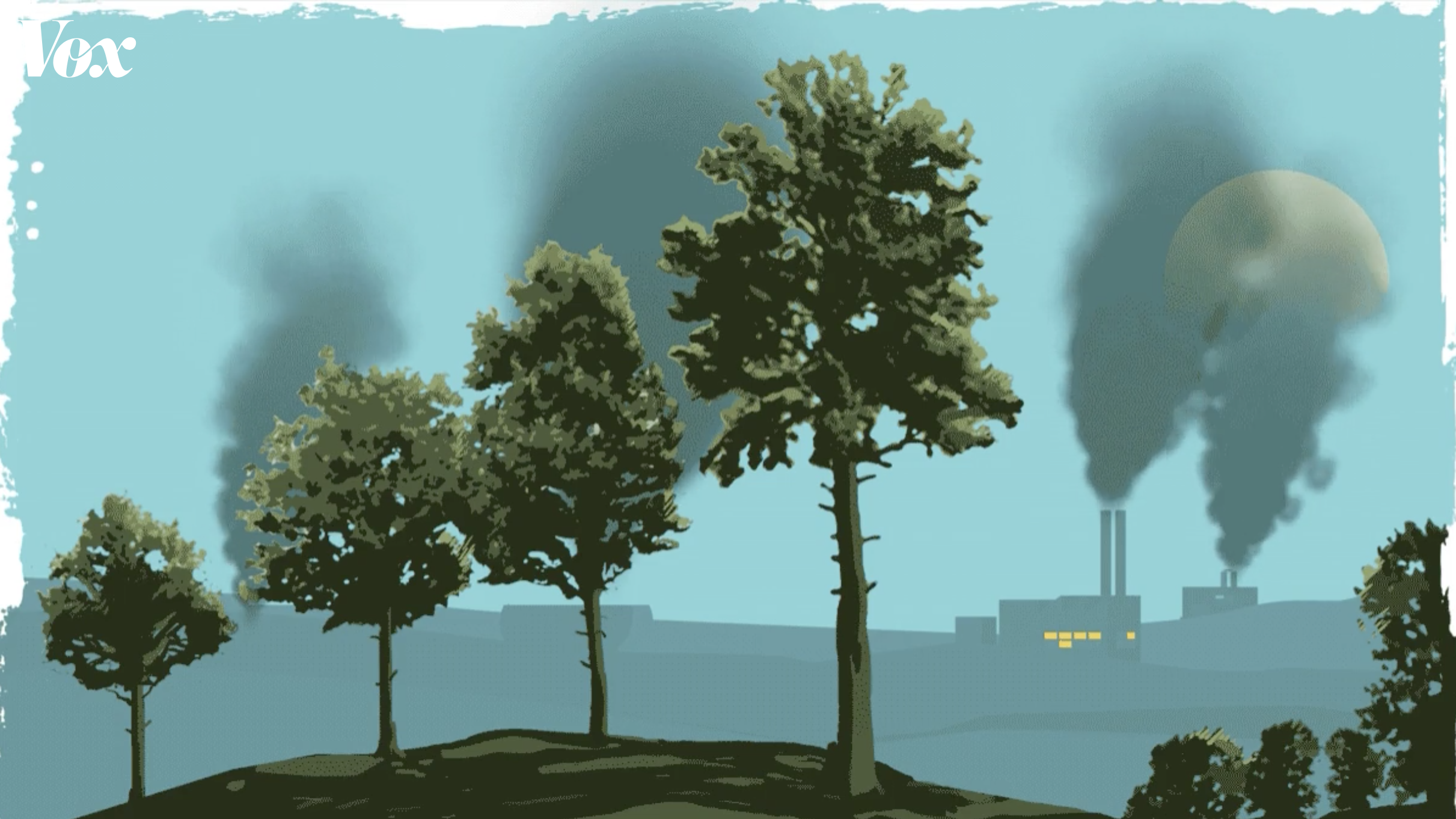
In the lowland forests of the American southeast, loblolly pines and cypress trees are grabbing carbon dioxide from the air right now. Using power from the sun, they release the oxygen and bind the carbon, building trunks, barks, and leaves.
But much of that carbon won’t stay there. As it turns out, millions of tons of wood from these forests each year are being shipped across the Atlantic, and burned in power plants in countries like the UK and the Netherlands, in the name of slowing climate change.
As they steadily wean themselves off coal, European Union nations are banking on wood energy, or “biomass,” to meet their obligations under the Paris climate agreement.
That’s because in 2009, the EU committed itself to 20 percent renewable energy by 2020, and put biomass on the renewables list. Several countries, like the United Kingdom, subsidized the biomass industry, creating a sudden market for wood not good enough for the timber industry. In the United States, Canada, and Eastern Europe, crooked trees, bark, treetops, and sawdust have been pulped, pressed into pellets, and heat-dried in kilns. By 2014, biomass accounted for 40 percent of the EU’s renewable energy, by far the largest source. By 2020, it’s projected to make up 60 percent, and the US plans to follow suit.
Fueling this boom is a simple, intuitive idea: that biomass is both renewable and “carbon neutral,” and a way to keep an economy built on burning fossil fuels humming along.
But a cadre of scientists and policy activists are now pushing back, saying that biomass energy rests on deceptive accounting. Rather than being carbon neutral, biomass is liquidating millions of tons of irreplaceable carbon stocks in the midst of a climate crisis already out of control.
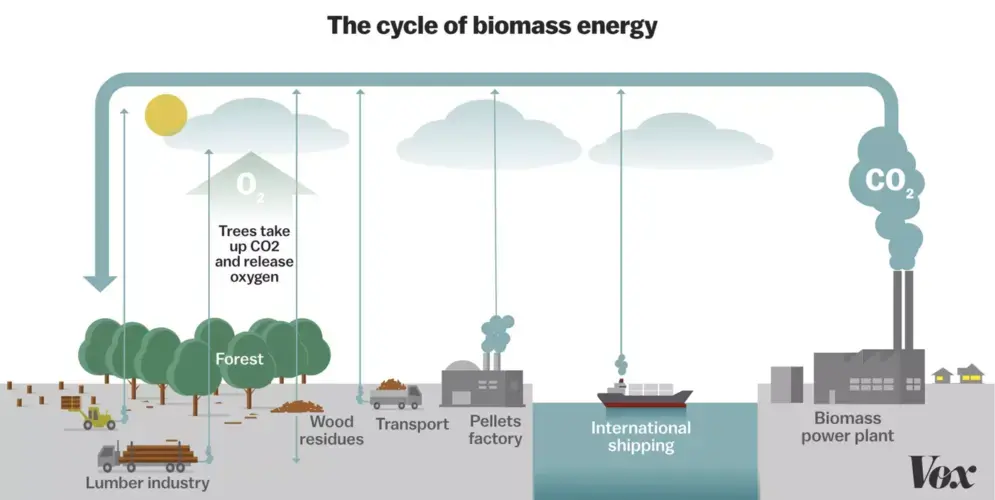
Burning carbon to store carbon?
There are few bigger players in the biomass industry than Drax Group, whose flagship power plant in the north of England sucks up nearly a quarter of global wood pellet production, about two-thirds of it from the US. The UK has bought big into biomass, and Drax powers 10 percent of the British electric grid, in large part thanks to massive government subsidies: about $1.2 billion a year.
Burning wood in its former coal plants, said Drax CEO Andy Koss, means 80 percent savings in carbon dioxide when compared to coal. “And in 25 to 30 years’ time, we’re delivering carbon savings.”
The carbon neutrality argument of Drax and others in the wood pellet industry rests on a couple of ideas: first, that the carbon burned in the pellets can be brought back to Earth in the form of new trees; second, that the wood burned is industry waste that would be lost to the air anyway.
The American lumber industry still does a lot of clear-cutting, said Seth Ginther of the US Industrial Pellet Association, an industry group focused on the international trade, and the pellet market provides a market for wood that would be cut anyway, but would otherwise just be left in a field to slowly evaporate, or be burned for waste.
“There was no universe,” he said, in which any sensible landowner was just going to leave a valuable resource like a forest standing, not earning money. But this way, Ginther said, landowners allow power plants like Drax to replace coal with a fuel source that, once used, can be regrown.
The biomass industry, Koss argues, isn’t driving clear-cutting so much as making use of its waste. “Clear cut is the traditional method of harvesting a forest. So it’s not biomass that drives whether forest is clear-cut or not; most foresters will tell you it’s the best way to get regrowth to come back, and that it’s good for biodiversity across a managed landscape.” The way the pellet industry sees it, by clearing dead wood that slows the growth of a forest, biomass “puts more carbon in the bank,” as Benedict McAleenan, spokesperson of Biomass UK, a British trade group, put it.
An even bigger argument for biomass, according to the industry, is the forestry maxim that “the forest that pays, stays.” By providing a new market to rural foresters who once depended on a dying pulp and paper industry, they create, Ginther said, “the difference between planting more trees and converting their land to something else.”
Koss said forest owners he talks to “often tell me that if it wasn’t for Drax or [its supplier] Enviva, I’d be turning this land into a Walmart.”
The wrong solution to the right problem
Yet all this, scientist Bill Moomaw argues, comes down to a tragically shortsighted view of both carbon accounting and our current climate predicament.
Moomaw, now a professor emeritus at Tufts, is a co-author of the Nobel Peace Prize-winning Intergovernmental Panel on Climate Climate report, co-author of four additional IPCC reports, and an expert on carbon sinks.
In 2009, as Massachusetts began debating whether to treat biomass as carbon neutral, he dove into the science. By assessing carbon emissions from bioenergy, and the slow regrowth rates of a replacement forest, he concluded that biomass stood to be “a serious problem.” To Moomaw, the question of whether biomass was ultimately carbon neutral was less important than when it balanced out.
Along with Mary Booth, a colleague who brought the issue to his attention, Moomaw and the Conservation Law Foundation convinced state officials to limit subsidies for biomass under the state Renewable Portfolio Standard. Unfortunately, the state later allowed large subsidies for burning wood to heat buildings.
The analysis was later confirmed by a colleague at MIT, John Sterman, who did the math, and confirmed that burning wood today would worsen climate change, “at least through the year 2100 — even if wood displaces coal, the most carbon-intensive fuel.”
Moomaw was concerned. The science on biomass, unlike that on the influence of carbon dioxide on warming, isn’t totally settled. Both carbon dynamics and forest science are complex and contentious fields, and in assessing whether biomass is better than alternatives, models have to take into account — or deliberately elide — complex factors. The assumptions those models make around variables like how fast wood decays in various ecosystems, and how much carbon gets reabsorbed into the soil, determine what kind of impacts they find for biomass.
But from an environmental policy perspective, Moomaw said, none of that was the point, because one thing wasn’t up for debate: Burning biomass means quickly dumping more carbon into the atmosphere at exactly the point we need to begin rapidly drawing it down. “I’m at loss to understand how this [policy] went forward unless you discover there was total government capture by the forest products industry.”
The first problem, he argued, comes from the industry-promoted idea that biomass simply makes use of wood that would have decayed anyway, an assumption made by the European renewable energy standards. Under the terms of the Kyoto Protocol, the forest owner, not the end-user of wood products, is supposed to account for the carbon lost when a forest is cleared. Because the assumption is that the cleared trees would decompose anyway, companies like Drax only have to count the carbon needed to turn from waste wood into fuel — gasoline for chainsaws, diesel for shipping — not the actual carbon that leaves their smokestacks.
This means that wood bought from the US effectively disappears from carbon markets, if not the atmosphere. The US, thanks to George W. Bush and a late-game lobbying effort by the fossil fuel industry, isn’t part of the Kyoto agreement, which means that it is not bound to keep track of emissions from forest loss.
Also, “waste wood” being pulped for biomass is only waste because the market doesn’t properly value carbon. It’s possible to envision a world in which forest owners are paid for the service their growing trees provide in pulling down carbon. “If we let some of our forests grow, we could remove an additional 10 to 20 percent of what we emit every year,” Moomaw said. “Instead, we’re paying subsidies to have people cut them down, burning them in place of coal, and counting it as zero carbon.”
The second problem cuts to the heart of the concept of carbon neutrality, and therefore to a core miscalibration in our system of carbon accounting itself: time. Carbon emission standards were put in place, remember, because the world is in the early stages of a climate crisis likely to get much, much worse.
Most governmental and international bodies in the OECD agree that actions taken in the next few years will have outsized effects on the future, even if they cannot bring themselves to take those actions: Even the famously cautious IPCC, in its 2018 report, gave the world just over a decade to cut emissions below 2010 levels to avoid circumstances that are plainly catastrophic.
So when we discuss technologies intended to forge the transition to the low carbon economy, scientists like Moomaw argued, time is an important factor. The question of which energy sources we can call carbon neutral isn’t about whether some model shows that planting trees later eventually makes up for burning them now. The only question that matters is how long does that take, and how much more carbon could be absorbed if trees were allowed to keep growing instead of being harvested and burned.
And researchers like Moomaw, as well as Michael Norton of the European Academy of Sciences; Duncan Brack, a fellow at the think tank Chatham House; and John Sterman of MIT, believe they have the answer: entirely too long.
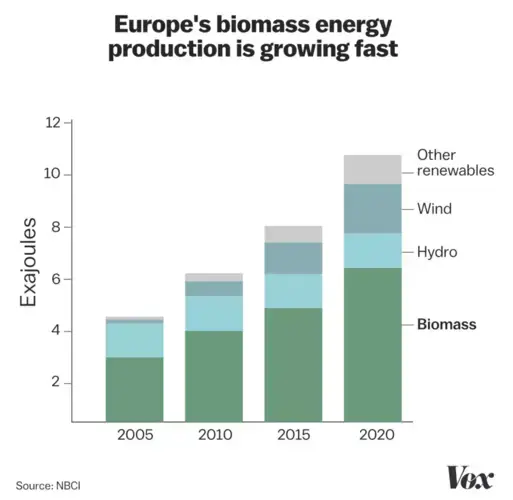
Getting trapped in carbon debt
The reason why comes down to two words: “carbon debt.” Whether burning trees for biomass or forging steel for windmills, every renewable energy policy releases carbon on the front end in hopes of savings on the back. The carbon-neutrality argument for biomass assumes that when a new tree grows back, it rebinds the carbon burned decades before for energy. After that point (called “parity”), the atmosphere is better off than if, as the biomass industry usually assumes, a power station had burned coal instead, and the wood had been burned as waste.
This reasoning, Moomaw argues, is based on a set of dubious assumptions that effectively cook the books. Imagine carbon in the form of a household budget. “If we did financial accounting like that in our daily lives,” he said, “we’d all be in prison.”
When a power plant burns wood pellets that were once living trees, they take on a big debt of carbon — or, as Sterman points out, liquidate an existing carbon credit. Think of this as principal. As with a financial institution, the world carbon and weather system charges interest: the opportunity cost from what would have happened had that tree remained there, growing and pulling ever more carbon from the air.
According to Moomaw and Sterman, the system only reaches parity once all that balances, and how long that takes depends on how trees are cleared — “thinning” individual trees or clearcutting whole forests — what trees they’re replaced with, and what fossil fuel they replace.
Against coal, Sterman’s lab at MIT estimated that parity takes between 60 and 90 years; the European Academy of Sciences is even less optimistic, estimating between generations and centuries. If the biomass replaces natural gas, the EAS found, it takes centuries at a minimum to reach parity. (This of course assumes that natural gas burns much cleaner than coal, which is arguable.) In case you’re wondering, the carbon debt of a wind turbine is paid off in about a year.
The biomass industry disputes these numbers, arguing that “thinning” a forest causes the remains trees to grow faster, taking up carbon more quickly. “It’s like the hairs on your head,” said McAleenan of Biomass UK. “If you pluck out one, the hairs around regrow so there’s no net loss. If you shave your head, it takes a long time to grow back. But that’s not what we do — we’re not clearing a whole forest.” Koss of Drax argues that the forests they buy from take a maximum of 30 years to repay their carbon debt.
But if the math here is disputed, critics like Moomaw argue, it’s also somewhat irrelevant, because there is no disputing the fact that more of those metaphorical plucked hairs equal more atmospheric carbon, and therefore more warming, today on the promise of savings later. Sterman, in a recent MIT paper, compares carbon neutrality logic to putting $1000 in a bank that promises to give it back, in 80 years, assuming they don’t go out of business or decide to spend it on something else. “You’d be better off if you keep your money,” he wrote, and “[i]t’s better to keep the trees on the land and all that carbon out of the atmosphere.”
The point is less the specific number of years to parity as that any amount of additional carbon in the atmosphere is bad news. During all those years until the carbon debt is, ultimately, repaid, that additional carbon dioxide in the atmosphere worsens climate change, with consequences that will last lifetimes.
“Carbon neutral,” Moomaw said, “isn’t the same as climate neutral. Even once you reach parity, that carbon has been floating around for a century, absorbing radiant heat. That means more methane released from the permafrost, and more melt on the glaciers. Those don’t go away in a hundred years even if replacement trees successfully grow. Even if we stopped releasing carbon tomorrow, sea levels would still rise for centuries. Climate effects are irreversible.”
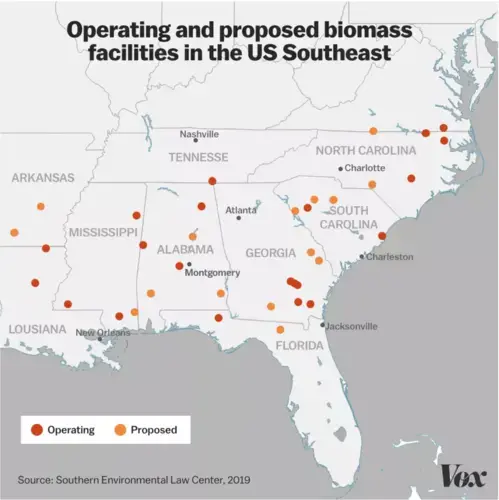
Scientists are calling for an end to biomass energy
It’s for that reason that in January of last year, Moomaw joined a group of nearly 800 scientists from across the world in petitioning the EU Parliament to end its support for biomass.
“Europe has been properly encouraging countries such as Indonesia and Brazil to protect their forests,” the scientists wrote, “but the message of this directive is ‘cut your forests so long as someone burns them for energy.’ Once countries invest in such efforts, fixing the error may become impossible.”
To meet just an increase of 3 percent in global energy demand with wood, the scientists wrote, the world would have to double its commercial logging. “At a critical moment when countries need to be ‘buying time’ against climate change, this approach amounts to ‘selling’ the world’s limited time to combat it.”
What role, then, do researchers see for biomass? Back when it started, the original renewables designation for biomass had been based on the idea that, say, a Finnish paper mill or a Swedish sawmill should get credit for running on its own scraps, rather than diesel. So if paper plants and sawmills burn residues and wastes that would otherwise quickly decompose, they wrote, that would be carbon neutral. But no increase in logging could be justified on climate grounds — even if, as the trade groups insist, it provided an additional income stream for forest owners.
To be fair, Andy Koss agrees with this, at least in principle: Drax, he argues, does run on the cast-offs of a larger logging industry. “Even our detractors agree that with residues, there’s real neutrality.”
The idea that the biomass industry runs only on waste from the lumber industry’s clear-cuts is disputed by land activists with groups like the Dogwood Alliance, but the larger problem is that the financial accounting implied by “residues” doesn’t match with the carbon accounting. Each additional “waste” tree still means incrementally less warming and a more stable world for future generations, a benefit of incalculable value that is, therefore, not calculated into its price.
The fact that the biomass industry has figured out a way to capture energy from an industry built on clear-cutting and burning them, the scientists argued, doesn’t make up for the fact that, in carbon terms, no more trees than absolutely necessary should be felled — or burned — at all.
So for policymakers, a challenge is figuring out a system of incentives and enforcement that would expand forests, which researcher and petition signer Mary Booth called “the only proven technology for sequestering carbon.” In the 19th century, the scientists concluded, “the use of wood for bioenergy helped drive the near deforestation of western Europe even when Europeans consumed far less energy than they do today.” Fossil fuel energy saved the forests, they wrote, but now the solution is “not to go back to burning forests, but instead to replace fossil fuels with low carbon sources, such as solar and wind.”
But in June 2018, the EU Commission, under lobbying pressure from the wood pellet industry and the Scandinavian lumber industry, voted to keep biomass listed as renewable energy — a decision which allows EU countries to stay on track to meet their “renewables” targets. They have now been joined in this position by the US. Like Britain, the US has big, expensive coal plants we would like to keep using, and biomass seems to provide a way to do this.
In the future, we could expect pellets to be burned either in converted coal or new biomass plants under the same accounting fallacy as the EU, something that Agriculture Secretary Sonny Perdue, a longtime friend of the biomass industry, advocated last year in the wake of the California wildfires. Such a reform could build on the 2018 fiscal spending bill, in which Congress directed federal agencies pass policies that “reflect the carbon-neutrality of forest bioenergy and recognize biomass as a renewable energy source.”
This determination was made over the objections of the Environmental Protection Agency’s own scientists. But in November 2018, the heads of the US Department of Agriculture, the Department of Energy, and EPA released a joint statement affirming the carbon neutrality of biomass. Among the many benefits they listed for biomass from “managed forests,” or tree plantations, were three that seemed almost Orwellian: “to promote environmental stewardship by improving soil and water quality, reducing wildfire risk, and helping ensure our forests continue to remove carbon from the atmosphere.” And so we sail on into a darkening future, burning the forests to save them.


